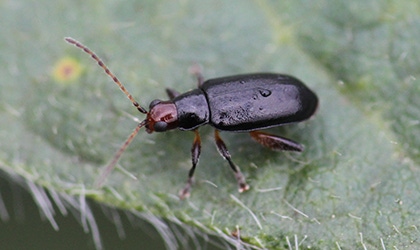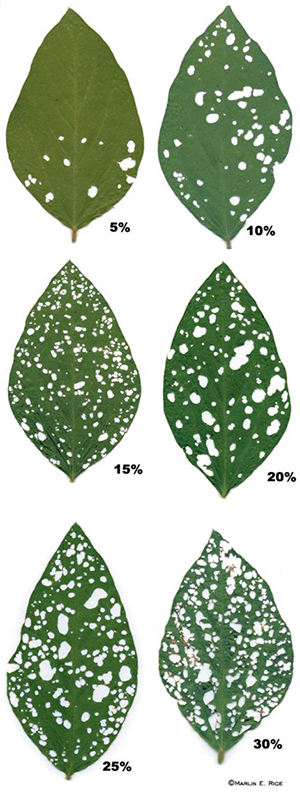
Redheaded Flea Beetles
Growers and researchers have been observing and receiving numerous reports about redheaded flea beetles in soybean throughout South Dakota. These beetles get their name due to the distinct red-brown colored head, which is contrasted by their otherwise shiny black bodies (Figure 1). Redheaded flea beetles are another defoliator in soybean that needs to be monitored to ensure that defoliation above the 20% threshold does not occur. Typically, these beetles are not of any concern by themselves in soybean.
The term flea beetle refers to beetles that have specialized hind legs that enable them to jump long distances, similar to fleas. In general, these beetles are defoliators. The redheaded flea beetle is no different, although it is one of the larger flea beetles that may be observed in South Dakota crops.
Soybean Defoliation
Although the observed populations have been relatively low thus far, we have seen defoliation occurring. For soybean, we recommend that the amount of defoliation observed within a field should be used to determine if management is necessary or not. This is partly due to the fact that there are numerous defoliators that may be present during this time of year. Most of the soybean that we have been scouting in South Dakota has reached the early reproductive (R) growth stages. After flowering has occurred, the threshold for defoliation is a cumulative average of 20%. This means that throughout the field, an average of 20% of the leaf tissue is removed from the plants (Figure 2).

Soybean defoliation chart. Developer: Marlin E. Rice
Originally posted by South Dakota State University Extension.
About the Author(s)
You May Also Like




